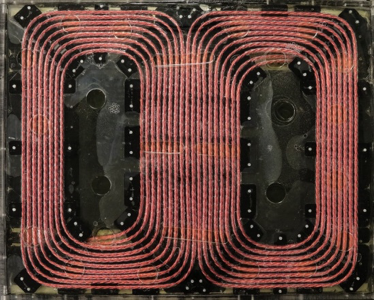Wireless charging is about to be big & requires about 4 kg of copper per passenger car.
Electric car charge stations are not widely distributed or available, and all require the driver to connect a cable to the car.
But electrical power, unlike liquid fuels, doesn’t require a physical connection to the car, opening up the future of wireless charging.
A wireless charging system consists of fixed and mobile modules.
The fixed part has a wall mounted power converter that changes normal mains electricity (at 50 or 60 Hz) to the much higher frequency of 85 kHz. This high-frequency power is sent to a fixed ground pad mounted on or under the pavement where a copper coil generates a magnetic field.
The mobile part is attached to the underside of a car where another copper coil intersects the magnetic field and, using power electronics, transforms it into DC power to charge the vehicle’s battery. This so called magnetic-resonance-charging technique can achieve grid-to-battery efficiency of up to 94% and equivalent to a wired connection.
The fixed charging pad contains about 20 meters of 5mm diameter copper wire wound into a 65cm x 50cm rectangular coil. The copper wire is made of about 1000 strands of 0.1mm diameter wires woven into a pattern that reduces electrical losses during high-frequency operation. A similar but somewhat smaller coil is affixed to the vehicle.
There is about 1.7 kg of copper in the fixed coil, about 1 kg in the cable from the wall box to the ground pad, and about 1 kg in the vehicle coil. Additional copper is contained in the frequency converting power electronics modules.
Full story: https://copperalliance.org/trends/copper-in-ev-charging-an-emerging-standard-around-wireless-charging/
